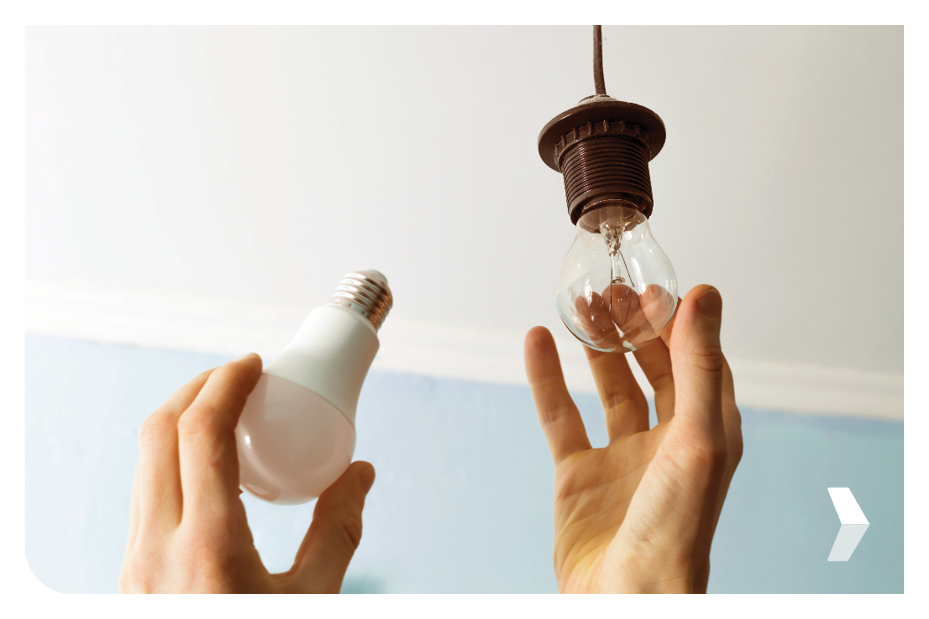Tips to Save Energy & Money at Home This Summer
August 20, 2021 — 5 min read
Do you feel like you're spending a fortune on your electric bill? For most households in the United States, the average energy bill comes in at around $115 per month.
Luckily, you don't need to get fancy to start saving money. There are plenty of easy changes to make around the house to reduce your carbon footprint and cut down on costs.
1. Dress Light and Enhance Air Conditioning with Fans
It might seem like common sense, but did you know that air conditioners come at an annual cost of about $29 billion to homeowners each year, according to energy officials? Fans, when used in conjunction with an efficient air conditioner, will keep you cool at a fraction of the cost.
Note that if your room is hot in the first place, the fan will do little to help, as it doesn't actually cool your room; instead, it cools by creating a wind-chill effect. You can also save money by dressing for the weather--during hotter months, try wearing lighter, cotton clothes.
2. Watch Your Water Consumption
Heating up water to take showers, do laundry and dishes, and perform other tasks is a household's second-largest energy expense, according to the U.S. Energy Information Administration.
Laundry room--Unless your clothes are really soiled, you don't need hot water to get them clean. Opt for warm or cold water instead of hot, and if possible, hang your clothes to air dry.
Bathroom--Try taking a shower instead of a bath. It's not as luxurious, but it uses a lot less water, especially if you have a low flow showerhead installed.
Kitchen--If you have a dishwasher, skip the pre-rinse and only wash full loads of dishes; you should also avoid using the rinse-hold function if you have just a few dirty dishes, as it uses 3 to 7 gallons of hot water each time.

3. Hunt for "Energy Vampires"
Energy vampires are devices that continue to use energy even when they're not in use. These phantom energy suckers could cost you hundreds of dollars per year. Common culprits include cellphone chargers, video game consoles, standby coffee makers, and cable or satellite boxes. To cut down on energy consumption:
Unplug devices you don't use often--if you have a gadget that you're not going to use soon, consider keeping it unplugged.
Use power strips--that way, it's easier to turn your devices off when they're not needed. If you spring for a smart power strip, it will shut down power to products when they enter standby mode.
To help calculate how much you're spending on passive energy consumption, check out this Energy Vampire Calculator.
4. Purchase Energy-Efficient Lighting
Installing energy-efficient bulbs is one of the easiest things you can do to increase your home's energy efficiency and save money in the long term.
Energy-efficient bulbs--also known as LEDs--use approximately 75% less energy than incandescent light bulbs because they don't release as much heat. They also last about 25 times longer, so you won't need to purchase new bulbs as often.

5. Mind the Gaps
Good insulation is the best measure for keeping cooled and heated air inside, but if you're feeling a draft through your windows or doors, caulking and weather-stripping are the next best things. If needed, seal gaps around loose windowpanes using window putty.
Keep in mind for future or upcoming renovations you might have planned: double-paned Energy Star-rated windows will reduce your heating and cooling bills, which account for some of the largest energy expenses in any home.
6. Upgrade to Energy-Efficient Appliances
When it's time to replace old appliances, look for Energy Star-certified replacements. These products are designed to use less electricity than traditional appliances.
Energy Star products will come with a higher price tag, but you will recover the extra cost through energy bill savings. Use this EnergyGuide label when you shop to see how each product compares to the energy use of similar appliances.
7. Install an Extra Layer of Insulation
Adding insulation to your attic, ceiling, or walls can help seal air leaks and improve your home's heating and cooling costs. Newer homes are often well insulated, while older houses can often benefit from an upgrade.
In an under-insulated home, an extra layer of insulation could lead to savings and allow a homeowner to recoup costs in just a few years. The EPA has published guidance to help homeowners figure out how much insulation they need based on the climate, type of insulation, and depth of current insulation.
8. Invest in Smart-Home Devices
These devices could be an important part of your energy-saving plan, as they will allow you to control their functions remotely from your smartphone.
Internet-connected thermostats, light bulbs, and light switches, among other items, allow you to put your devices on a schedule and show you how much energy they're using. Some higher-end devices will learn your habits and adjust accordingly.
For above and beyond, there are smart leak sensors that will send your smartphone an alert if it detects a leak, allowing you to tend to the issue before it gets out of hand.

9. Not Sure? Conduct a Home Energy Audit
Hiring an auditor to inspect your home will help you discover where you might be losing energy--and money. The auditor will perform tests to see which home improvements would be beneficial for your living space. It may reveal the need to clean your air ducts or replace worn window weather stripping. Many utility companies offer this service for free, but before contracting with a company, take the following steps:
- Get several references and contact them all; Ask if they were satisfied with the work.
- Call the Better Business Bureau and ask about any complaints against the company.
- Make sure the energy auditor uses a calibrated blower door.
- Make sure they do thermographic inspections or contract another company to conduct one.
Are you ready to start the conversation about homeownership? Get in touch with a local mortgage advisor today and find out what your options are.
Categories
Archives
Recent Posts
You bring the dream. We'll bring the diagram.
There’s a financing solution for just about every situation.
I felt like I was treated like family, great communication and helping me with any questions I had.

You bring the dream. We'll bring the diagram.
There’s a financing solution for just about every situation.
Where does your sun shine? Find your local advisor.
Enter your city or state to see advisors near you.
